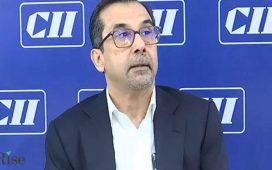
Integrating sustainability into the budget
A World Bank report finds that climate-resilient infrastructure investments in low- and middle-income countries could produce roughly $4.2 trillion in total benefits—around $4 for each dollar invested. Sustainable infrastructure isn’t just a cost; it’s a strategic investment in a prosperous and vibrant future for all. It reduces long-term costs, improves public health, and unlocks economic potential by attracting green businesses and investors.
- Emphasis on green infrastructure: Allocate funds for projects like green roofs, urban parks, and rainwater harvesting systems that can mitigate heat island effects, improve air quality, and enhance liveability. Moreover, it is also important to measure and reduce the impact of raw materials and products on the environment.
- Material Revolution: Encourage research and development in sustainable building materials like bioplastics, bamboo, and recycled content to reduce embodied carbon and reliance on traditional resource-intensive materials.
- Circular Economy Approach: Promote policies that incentivize construction waste reduction, recycling, and repurposing of materials to minimise environmental impact and create a closed-loop system.
- Community-Driven Initiatives: Support grassroots initiatives led by local communities for sustainable development projects like rooftop gardens, urban farms, and renewable energy microgrids.
- Skill Development and Knowledge Sharing: Invest in training programmes and knowledge-sharing platforms to equip architects, engineers, and construction workers with the skills and knowledge needed to design and build sustainable infrastructure.
Focus on smart cities
One of the main expectations from the budget is a continued focus on the development of smart cities and sustainable infrastructure projects. India’s ambitious Smart Cities Mission needs a renewed thrust. The budget should prioritise:
- Allocation for city-specific infrastructure development: Each smart city has unique needs, from upgrading public transportation to retrofitting existing buildings for energy efficiency. Tailored allocations can address these diverse requirements and utilise the resources in the best possible way.
- Focus on interconnectivity: Smart cities aren’t just about isolated technological advancements; they’re about seamlessly integrated systems. The budget should promote data sharing and collaboration between different city departments to create a truly connected urban ecosystem.
- Prioritising citizen engagement: Smart cities thrive on active citizen participation. Budgetary allocations for citizen awareness campaigns and participatory budgeting processes can ensure residents are not just beneficiaries but stakeholders in shaping their urban future.
Embracing the Innovation Wave
The built environment sector is witnessing a surge in innovative technologies, from BIM (Building Information Modelling) for efficient construction planning to AI-powered smart buildings that optimise energy usage. To harness this potential, the budget is expected to:
- Boost R&D in emerging technologies: Increased funding for research institutions and public-private partnerships can accelerate the development and adoption of homegrown sustainable building materials, renewable energy solutions, and intelligent infrastructure management systems.
- Incentivize green certifications: Tax breaks or subsidies for adopting green building certifications like LEED or IGBC can nudge developers towards more sustainable construction and innovative global construction technology practices. This will assist in meeting India’s long-term goal of reaching net zero by 2070.
- Bridge the digital divide: Investments in digitising land records, streamlining construction permits, and creating a centralised data platform for the sector can foster transparency and efficiency.
Addressing affordability and housing for all
The housing crisis remains a major challenge. The budget must address this concern through:
- Increased allocation for affordable housing projects: Revisiting and reallocating funds under schemes like Pradhan Mantri Awas Yojana can boost construction and make homeownership a reality for more low-income families.
- Public-private partnerships for land acquisition and development: Streamlining land acquisition processes and encouraging private developers to invest in affordable housing projects can bridge the supply-demand gap.
- Focus on rental housing: Budgetary allocation for rental housing schemes can provide secure and affordable options for the growing urban migrant population.
Additional key expectations
- Streamlining approval processes for construction projects will reduce delays and boost efficiency.
- Providing incentives for the use of locally sourced materials and products to reduce carbon footprints and support local economies.
- Promoting green financing mechanisms like green bonds to attract investments for sustainable infrastructure projects.
- Establishing a regulatory framework for emerging technologies like drones and autonomous vehicles in the construction sector.
The Union Budget’s focus on the built environment sector will not only create jobs and boost economic growth but also contribute to improving the quality of life for millions of Indians. By embracing innovation, smart city development, and affordable housing, the government can create a built environment that is not just sustainable but also equitable and prosperous for all.
The author is RICS Director, South Asia.









